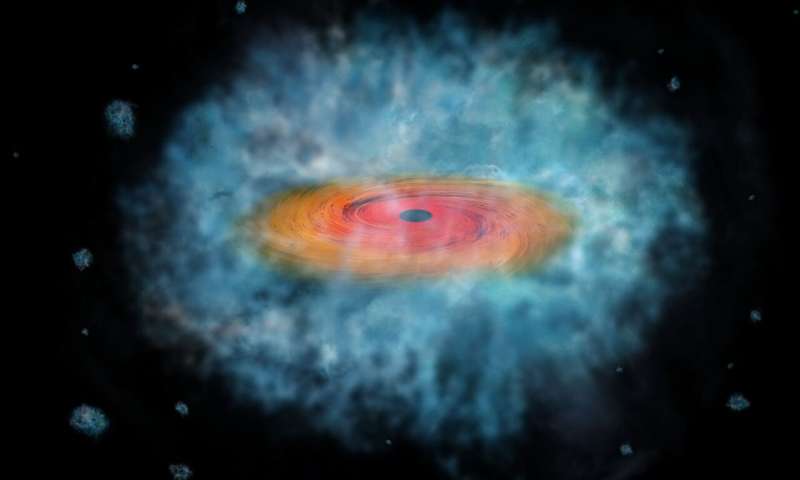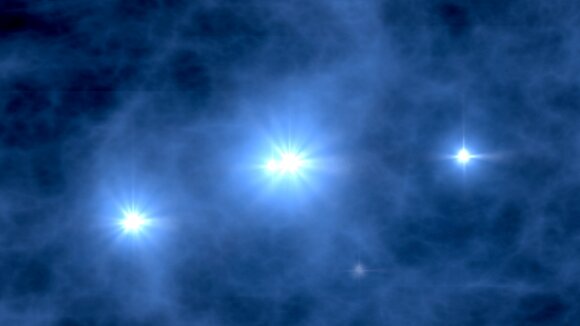Scientists believe that supermassive black holes, which are located in the centers of galaxies, were formed not by the merger of stellar mass objects, but by the direct collapse of giant clouds of gas. And magnetic fields helped them in this.

Mystery of the birth of supermassive black holes
At the center of every large galaxy is a black hole, the mass of which is millions and billions of times greater than the sun. And scientists are still arguing about how they originated. Now the absolute majority of such objects are born at the end of the life cycle of massive stars. However, their mass is limited to only a few dozen masses of our luminary.
It could be assumed that they are formed by collisions of stellar-mass black holes. However, deep space images show that already a billion years after the Big Bang, real monsters existed in the centers of galaxies. They simply would not get formed by merging smaller objects.
And there are very few intermediate-mass black holes, that is, thousands of times larger than the Sun. Therefore, a significant part of scientists now explain the formation of supermassive black hole nuclei by the direct collapse of gas clouds.
This process took place from 100 to 250 million years after the origin of the universe. Giant clouds of gas compressed under their own weight, forming stars with a mass thousands of times greater than the Sun. The matter that continued to fall on them stabilized this process and created accretion disks. But in the end, everything ended in collapse and the formation of black holes with a mass a million times larger than our sun.
Magnetic fields in the accretion disk
Scientists from the University of the United Arab Emirates conducted a new simulation of the direct collapse of a gas cloud into a black hole, taking into account magnetic fields. Until now, they were considered too weak to significantly influence the processes.
In addition, all such simulations were limited by computing power and therefore covered no more than 1000 years of the evolution of these space objects. At the same time, it is believed that the full cycle of the formation of supermassive black hole nuclei lasted 1.6 million years. And this time scientists managed to carry out such a large-scale computer simulation.

It demonstrated that the magnetic fields in these accretion disks, which existed at the beginning of the universe, could influence the evolution of the embryos of supermassive black holes. In particular, they could form powerful jets and streams of matter. These jets were so powerful that they could carry a significant part of the moment of inertia of matter.
This helps to solve one problem of the direct collapse scenario. It was the excess of the moment of inertia that was the main obstacle to the formation of black hole nuclei in this model. Magnetic fields helped solve it.
Now scientists are waiting for an opportunity to test their assumptions. But this can only be done with next-generation radio telescopes, such as a square kilometer array of antennas or a very large array. But they will be put into effect only in 2027 and 2029.
According to phys.org
Follow us on Twitter to get the most interesting space news in time
https://twitter.com/ust_magazine

